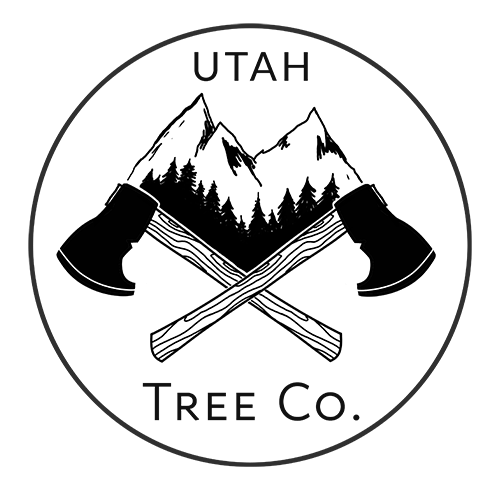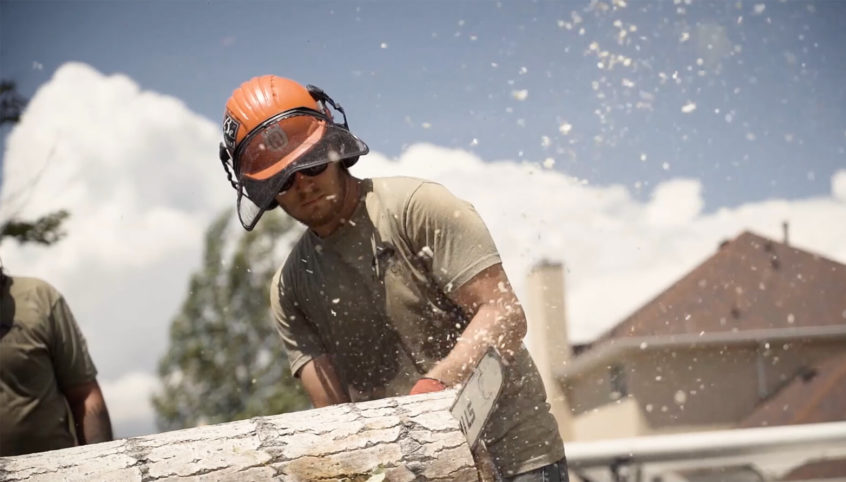You finally cut down that old tree, but now you’re stuck with a tree stump.
While you can call in professional Utah stump removal services, it may be a good idea to try different things yourself first. To be successful, however, you need to start right.
You should be able to examine your tree stump and figure out its various features. For instance, you will have to check if the stump is small, large or medium, and if its root system is too deep. That’s because large and deeply-rooted stumps may be more difficult to remove.
The method of tree stump removal will also be determined by your precise reason for wanting to remove it.
Once you have all this information, you should feel ready for the job. Of course, nothing is safer than having experienced tree stump services providers handle it for you. But for those looking to explore DIY methods, read on.
Why Proper Tree Stump Removal Is a Must
Needless to say, once you’ve removed a tree in your yard, it is a good idea to have the stump removed as well. After all, it’s not like the stump has any purpose to serve. Here are a few reasons to go for tree stump removal in your yard.
- They’re hazardous: While some stumps may be prominently present in your yard, other may get camouflaged or covered by the surrounding weeds, grass or other plants, making it a serious tripping hazard. When enjoying your yard, the last thing you want is to stub your toe against an old tree stump that you didn’t know was there.
- They’re unattractive: Let’s face it – tree stumps ruin your yard’s natural beauty. No likes seeing old tree stumps sticking out of the ground amid the greenery. Tree stumps look worse when weeds or fungus start growing on them, which is sure to happen if they’re left unattended.
- They’re a waste of space: If you’re like the typically homeowner who loves their yard, you probably consider every inch of it highly valuable. Tree stump removal is crucial to having a wide, clean, and safe yard.
How Do You Take out a Tree Stump?
If you’re wondering how to remove a large tree stump (or even a small one), you’re in the right place. Mentioned ahead are three options worth trying.
1. Remove It by Hand
Performing manual tree stum removal by is possible, but can get tricky. You may want to start with a smaller and older tree stump that’s diseased to get the hang of how it is to be done. You will also need certain tools, such as a chainsaw or limbing saw, a digging bar, a shovel, a pick mattock, an ax, a four-wheel drive truck, and chains.
Here’s what you need to do.
- Start by carefully removing all the lower branches from the trunk with the help of a chainsaw or limbing saw.
- Next, get rid of the topmost part of the trunk. Leave a bit of it behind as a buffer though.
- Expose the roots of the stump by using your shovel, digging bar, and pick mattock, as required. Rinse away the dirt and debris with a hose to unearth more roots.
- With the help of you ax, cut all the major roots. It helps to push and pull the trunk to reveal more roots, until the trunk is entirely uprooted.
- If the trunk is stubborn, wrap a strong chain around it and connect it to you truck. Drive forward to pull the trunk forward and reverse to wiggle the trunk to uproot it completely.
2. Use Stump Killer and Other Chemicals
You can also use chemicals to get rid of that annoying tree stump. You’ll need a chainsaw, a drill, an ax, and potassium nitrate.
The tree stump removal process is as follows:
- Use a chainsaw to cut off as much of the stump as possible.
- Create 1-inch holes around the perimeter of the stump using your drill. Drill some more holes. Try and move inward and make sure the holes are eight to 12 inches deep, depending on the size of the stump.
- You will also need to drill holes around the sides to meet with the other holes to create 45-degree angles.
- Pour potassium nitrate into the holes and fill them with water. Wait for around five to six weeks so the stump softens.
- You will now be able to cut the softened stump with an ax.
3. Burn It
If your neighborhood allows it, you can simply burn down the tree stump. This method may be considered an extension of the chemical-removal process. Here’s what you’ll need to do.
- Drill eight to 10 inches deep holes in the center of the stump. Clean out the hole. Continue drilling holes with one-inch of space between them.
- Add potassium nitrate into all the holes, followed by hot water. Do this until the potassium nitrate has properly dissolved.
- Place scrap wood over the stump and ignite it using kerosene or fuel oil.
- Once burnt, use your shovel to disintegrate leftover roots or stump pieces.
What Next?
Once the tree stump is removed, you should fill the hole with topsoil. This should be followed by spreading grass seed on the top. Cover it with mulch and water it well. Allow the grass to grow to your desired extent, and watch your yard transform into an idyllic retreat.
A major challenge you may face after DIY tree stump removal is disposing them off. They may not be collected along with your other yard waste. You may, therefore, have to take large tree stumps to your local recycling center.
If multiple tree stumps need to be disposed, you can consider renting a wood chipper. The wood chips can then be used to beautify your yard.
You can also contact a professional tree stump removal service provider, who can haul away stumps for you. They can also assist you in complex tree stump removal jobs.
In Conclusion
As you can see, ensuring a safe tree stump removal task some effort and know-how. It requires time, effort, cost, and patience, and is definitely not a hassle-free job. However, the above methods are worth a try if you have some prior experience in this task and are up for the challenge again. Chances are, you’ll have to buy or rent the appropriate tools to complete the task properly. Of course, you have the option of entrusting the job to a Utah tree stump service company instead. They will use their knowledge and experience to ensure flawless and safe work. All you will have to do is prepare yourself to bask in the glory of your property’s beautiful outdoor space.

